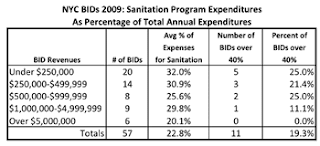FOR IMMEDIATE RELEASE
Online version available at: www.theadrr.com
Contact:
N. David Milder, Editor
The ADRR — The American Downtown Revitalization Review
718-805-9507 [email protected]
THE CREATION OF THE AMERICAN DOWNTOWN REVITALIZATION REVIEW (THE ADRR)
There currently is no real professional journal for the downtown revitalization field. For many years, that has been strongly lamented by many of the field’s best thinkers. To remedy that situation, a band of accomplished downtown revitalization professionals are creating The ADRR. It will be a free online publication, appearing four times each year. The target date for the debut issue is now set for the June 1-15, 2020 timeframe, with the second issue aimed for the Sept 7-14, 2020 timeframe.
This ADRR is intended to be a lean and mean operation, based totally on the availability of free online resources and the time, energy and elan contributed by its authors, advisory and editorial board members, and its editor.
How to Subscribe to The ADRR
Those interested can now visit The ADRR’s website, www.theadrr.com , where, on the home page, they can sign up to become subscribers. This enrollment places the subscriber on a MailChimp mailing list so that they can receive New Issue Alerts (see below).
How Issues of The ADRR Will Be Distributed.
New Issue Alerts, containing the Tables of Contents of issues and links to their downloadable pdfs of articles are sent to subscribers via a MailChimp email blast and posted to the ADRR’s website. Each issue’s pdf files initially will be stored in a folder in ND Milder’s Dropbox account from which they can be downloaded. Subscribers can download only those articles they want to read and whenever they want to read them. The ADRR also can be found via Google searches.
The Content We Are Aiming For.
Only manuscripts about major downtown needs, issues and trends will be considered for publication. They will be thought pieces and not just reports about a downtown’s programs and policies that its leaders want to brag about. Articles must have broad salience and their recommendations broad applicability within the field. The “voice” of The ADRR will be anti-puff, and very factual, evidence driven, though not dully academic. Discussions of problems and failures will be considered as relevant as success stories if, as so often is the case, something substantial can be learned from them. The ADRR will not avoid controversial issues.
Also, the focus of The ADRR will not be overwhelmingly on our largest most urban downtowns, but also provide a lot of content and relevant assistance to those in our small and medium sized communities, be they in suburban or rural areas.
Who Will Write the Articles?
Hopefully, they will be from people in a broad range of occupations – downtown managers and leaders, municipal officials, academics, developers, landlords, businesspeople, consultants, etc. — who have significant downtown related knowledge and experience.
Curated Articles and Wildflowers. Initially, the ADRR will solicit articles to prime the content pump. Once The ADRR is up and running some articles will continue to be solicited on topics deemed a high priority by the editorial board members. Each board member can select a topic to curate an article on and seek the author(s) to write them. However, there still will be a continual traditional general call for submissions (wildflowers) focused on subjects selected by their authors. All submissions, curated or wildflower, must demonstrate sufficient merit to warrant publication in The ADRR. All submitted articles will be reviewed by board members. We hope to see many submissions!
Article Length and Author Responsibilities.
There will be short reads and long reads. Articles of 1,500 to 5,000 words will be considered. Multi-part articles of exceptional merit and salience will also be considered. What counts is their quality, not their length. Authors must have their articles thoroughly proofread prior to submission. Poorly proofed manuscripts will be rejected. Guidelines for submissions may be found on The ADRR website.
Publication Schedule:
Published four times per year, with a minimum of 5 articles in each issue. Given that this is an online publication, from a production perspective, the number and length of the articles is not a particular problem. However, from an editorial and content management perspective, the number of articles and their lengths can quickly become burdensome.
How It Will Be Organized.
The ADRR will be published by an informal group for its first year, with no person or group having ownership.
Editor. During the ADRR’s first year, N. David Milder has volunteered to serve as its editor.
The Advisory/Editorial Board :
- Jerome Barth, Fifth Avenue Association
- Michael J Berne, MJB Consulting
- Laurel Brown, UpIncoming Ventures
- Katherine Correll, Downtown Colorado, Inc.
- Dave Feehan, Civitas Consulting
- Bob Goldsmith, Downtown NJ, and Greenbaum Rowe
- Stephen Goldsmith, Center for the Living City
- Nicholas Kalogeresis, The Lakota Group
- Kris Larson, Hollywood Property Owners Alliance.
- Paul R. Levy, Center City District, Philadelphia
- Beth Anne Macdonald, Commercial District Services
- Andrew M. Manshel, author
- N. David Milder, DANTH, Inc
- John Shapiro, Pratt Institute
- Norman Walzer, Northern Illinois University
Articles in our first issue that will be published in June 2020
- Michael Berne, MJB Consulting, Working Title, ” Bringing Downtown Retail Back After COVID-19”
- Roberta Brandes Gratz, “Malls of Culture.”
- Andrew M. Manshel, “Is ED Really a Problem?”
- N. David Milder, DANTH, Inc., “Developing a New Approach to Downtown Market Research Projects – Part 1.”
- Aaron M. Renn, Heartland Intelligence, “Bus vs. Light Rail.”
- Michael Stumpf, Place Dynamics, “Using Cellphone Data to Identify Downtown User Sheds”.
- The Spotlight: “Keeping Our Small Merchants Open Through the COVID-19 Crisis”
- Katherine Correll, Downtown Colorado, Inc.
- David Feehan, Civitas Consulting
- Isaac Kremer, Metuchen Downtown Alliance
- Errin Welty, Wisconsin Economic Development Corporation.
